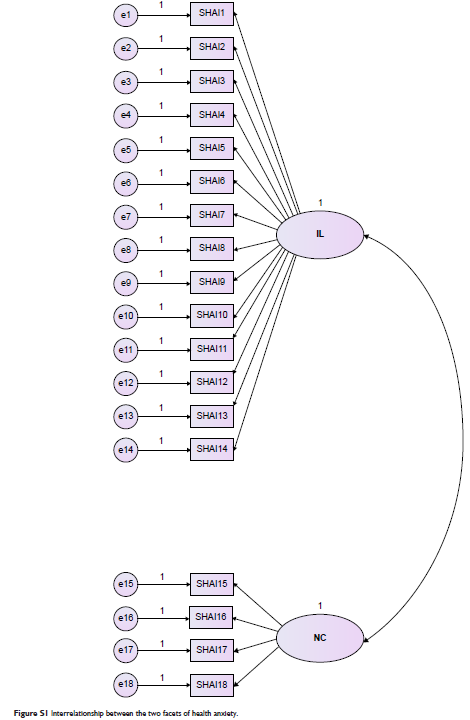9 5 9 0 3
论文已发表
注册即可获取德孚的最新动态
IF 收录期刊
- 3.3 Breast Cancer (Dove Med Press)
- 3.4 Clin Epidemiol
- 2.5 Cancer Manag Res
- 2.9 Infect Drug Resist
- 3.5 Clin Interv Aging
- 4.7 Drug Des Dev Ther
- 2.7 Int J Chronic Obstr
- 6.6 Int J Nanomed
- 2.5 Int J Women's Health
- 2.5 Neuropsych Dis Treat
- 2.7 OncoTargets Ther
- 2.0 Patient Prefer Adher
- 2.3 Ther Clin Risk Manag
- 2.5 J Pain Res
- 2.8 Diabet Metab Synd Ob
- 2.8 Psychol Res Behav Ma
- 3.0 Nat Sci Sleep
- 1.8 Pharmgenomics Pers Med
- 2.7 Risk Manag Healthc Policy
- 4.2 J Inflamm Res
- 2.1 Int J Gen Med
- 4.2 J Hepatocell Carcinoma
- 3.7 J Asthma Allergy
- 1.9 Clin Cosmet Investig Dermatol
- 2.7 J Multidiscip Healthc

已发表论文
一个中国版简短的健康焦虑量表的信效度检验: 一个对大学生的调查
Authors Zhang Y, Liu R, Li G, Mao S, Yuan Y
Published Date July 2015 Volume 2015:11 Pages 1739—1747
DOI http://dx.doi.org/10.2147/NDT.S83501
Received 25 February 2015, Accepted 29 April 2015, Published 16 July 2015
Background: The Short Health Anxiety Inventory (SHAI) is widely used in
English-speaking populations, with good reliability and validity. For further
research needs in the Chinese population, it was translated into a Chinese
version (CSHAI). Furthermore, the reliability, validity, and cutoff score were
examined in a nonclinical population in the People’s Republic of China.
Methods: Three hundred and sixteen undergraduates were evaluated by a set of questionnaires including CSHAI, Zung Self-Rating Anxiety Scale (SAS), Zung Self-Rating Depression Scale (SDS), and the State-Trait Anxiety Inventory (STAI). Fifty-eight students completed CSHAI again after 30 days.
Results: The two-factor model had satisfactory fit indices. The correlation coefficients between each item with the CSHAI total and each subscale were between 0.386 and 0.779. The Cronbach’s alpha coefficients of CSHAI total and its subscales were 0.742, 0.743, and 0.788, respectively, and the split-half coefficients were 0.757, 0.788, and 0.912. The test–retest correlation coefficients were, respectively, 0.598 (P <0.001), 0.539 (P <0.001), and 0.691 (P <0.001). Convergent validities were respectively 0.389–0.453, 0.389–0.410, and 0.250–0.401, and discriminant validities were -5.689 (P <0.001), -5.614 (P <0.001), and -3.709 (P <0.001). The cutoff score was 15.
Conclusion: CSHAI showed good factor structure, reliability, convergent validity, and discriminant validity, and 15 was determined to be the appropriate cutoff score for screening health anxiety.
Keywords: health anxiety, confirmatory factor analysis, cutoff score
Methods: Three hundred and sixteen undergraduates were evaluated by a set of questionnaires including CSHAI, Zung Self-Rating Anxiety Scale (SAS), Zung Self-Rating Depression Scale (SDS), and the State-Trait Anxiety Inventory (STAI). Fifty-eight students completed CSHAI again after 30 days.
Results: The two-factor model had satisfactory fit indices. The correlation coefficients between each item with the CSHAI total and each subscale were between 0.386 and 0.779. The Cronbach’s alpha coefficients of CSHAI total and its subscales were 0.742, 0.743, and 0.788, respectively, and the split-half coefficients were 0.757, 0.788, and 0.912. The test–retest correlation coefficients were, respectively, 0.598 (P <0.001), 0.539 (P <0.001), and 0.691 (P <0.001). Convergent validities were respectively 0.389–0.453, 0.389–0.410, and 0.250–0.401, and discriminant validities were -5.689 (P <0.001), -5.614 (P <0.001), and -3.709 (P <0.001). The cutoff score was 15.
Conclusion: CSHAI showed good factor structure, reliability, convergent validity, and discriminant validity, and 15 was determined to be the appropriate cutoff score for screening health anxiety.
Keywords: health anxiety, confirmatory factor analysis, cutoff score
